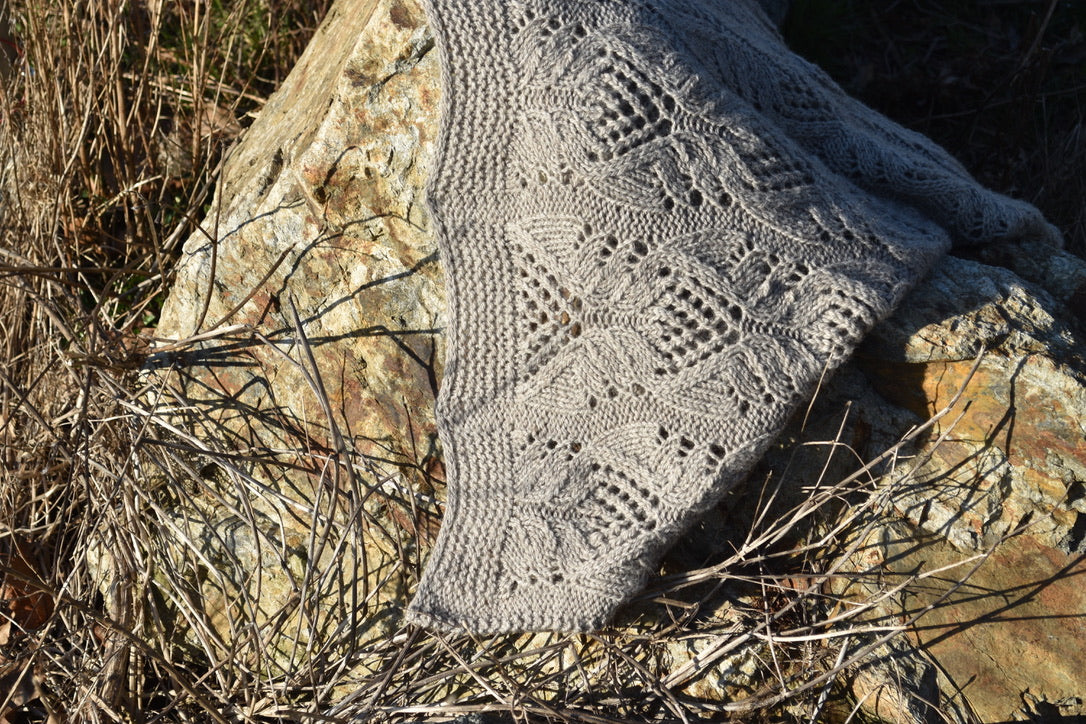
Storytelling Stitches: Lace Knitting
Lace knitting is a dance between space, and increases and decreases. Just like music, I find the magic is the space between the "notes". Unlike in cable knitting, where the texture is crafted by the twisting of stitches, lace patterns are created through deliberate yarn overs and decreases to shape designs ranging from simple eyelets to intricate patterns. The origins and history of lace knitting is a rich, fascinating tale, woven throughout history. There's so much to explore; so let's take a deep dive this week into the joys of LACE!
Origins of Lace Knitting:
Lace knitting can trace its origins back several centuries, with some of the earliest examples coming from Europe. The precise origins are somewhat murky, but it is believed that the practice began somewhere in the Mediterranean region and spread through Europe with the movement of trade and culture.
The earliest known examples of lace-like knitting come from the 16th century. Knitting was an established craft by this point, but the creation of openwork or lace patterns took it in a new direction.
B traditions of lace emerged in two different regions in Europe, who's names are still spoken with r by modern knitters!
-
Shetland Lace: One of the most renowned traditions of lace knitting developed in the Shetland Islands of Scotland. Shetland lace became particularly famous in the 19th century when the fine, delicate shawls knitted by the islanders caught the attention of the Victorian fashion world. These shawls could be so fine that they could be pulled through a wedding ring, leading to the term "ring shawls."
-
Orenburg Lace: In Russia, the Orenburg region developed its own distinct style of lace knitting, recognized for its gossamer-thin shawls and intricate designs. Orenburg lace typically features a combination of garter stitch and lace that makes it uniquely warm as well as beautiful.
The Spread and Evolution of Lace Knitting:
The increase of popularity of lace is mirrored in the increases of the stitches themselves, a beautiful symmetry. Lace knitting became widely popular in the 19th century, partly due to the influence of Queen Victoria, who was known to be an enthusiastic knitter. Patterns began to be published, allowing for the replication and sharing of designs.
Though Irish lace is traditionally crocheted, the 19th and early 20th centuries saw a significant development in Irish lace knitting, especially during the times of famine when it became an important source of income for many families.
In the modern era, lace knitting has seen a resurgence as knitters rediscover and reinterpret traditional patterns. Today, lace knitting can be found in everything from delicate shawls and wedding veils to more robust items like sweaters and socks. It's complexity inspires knitters to push themselves in the craft, and learn new skills.
Lace Knitting as Storytelling:
Like other forms of traditional craft, lace knitting often carries with it stories and history. Patterns can have names that reflect their origin or the inspiration for their creation. In the Shetland Islands, for instance, certain patterns might be named after a place, a family, or an element of the natural world, such as "Fir Cone" or "Cat's Paw."
The knitting of lace can also be a form of storytelling in itself, with the repetition and rhythm of the work allowing for reflection and personal expression. Lace knitters often adapt and evolve patterns, creating their own "narratives" within the stitches.
While the act of lace knitting does not inherently tell a story in the same symbolic way as the patterns of Aran cables might, it certainly conveys a cultural and historical narrative. Each piece of lace i a representation of the time, patience, skill, and creativity that has been a part of the craft for generations.
What stories will you learn to tell in lace?
